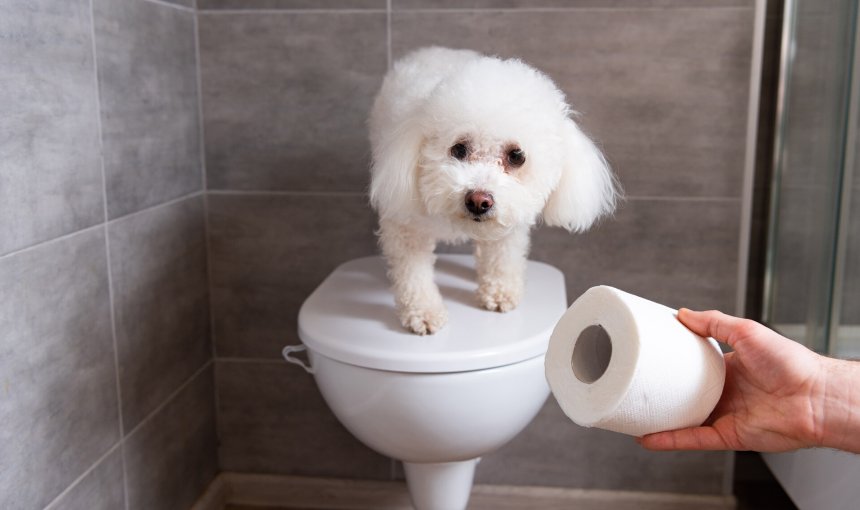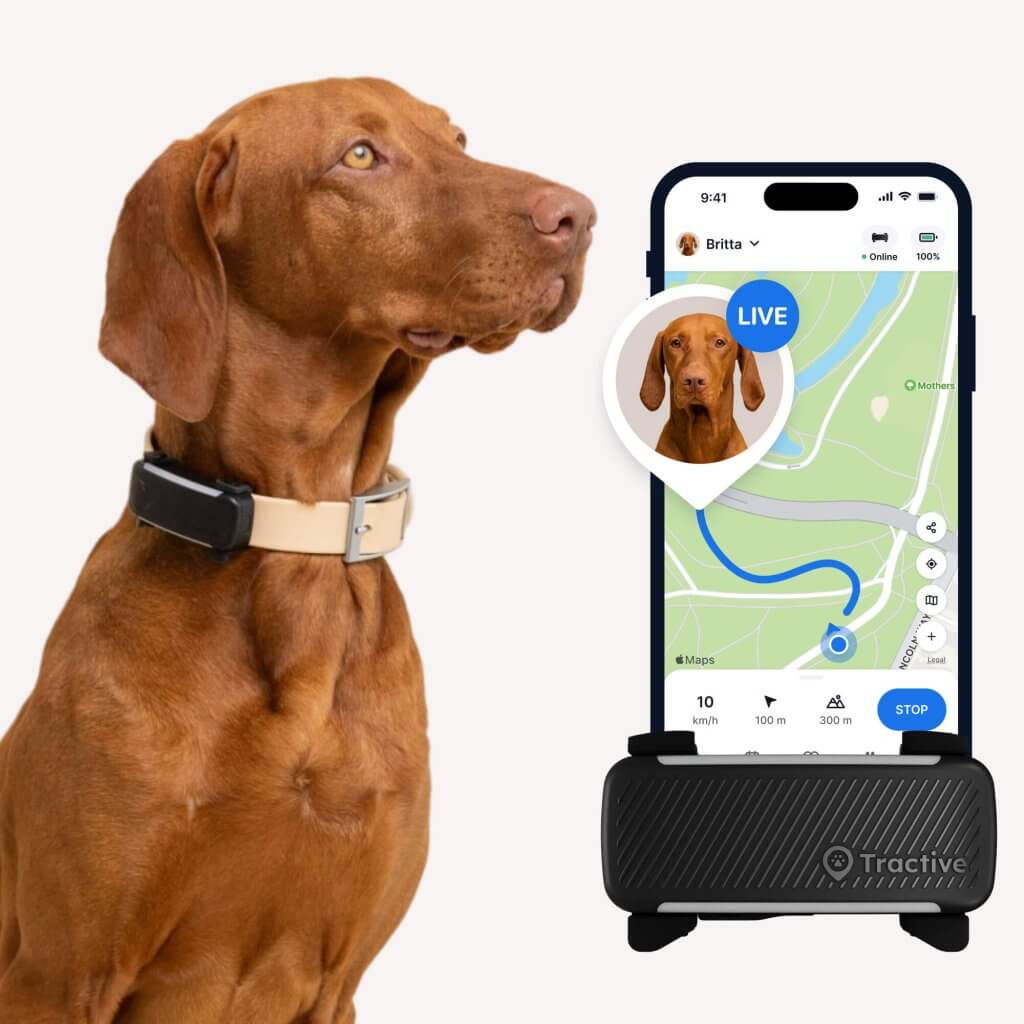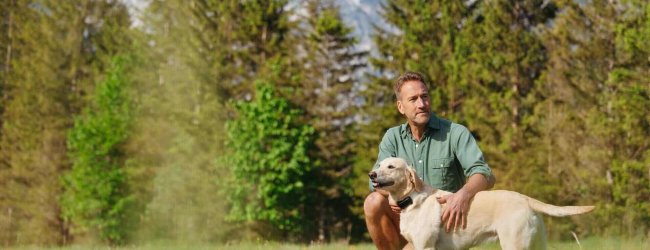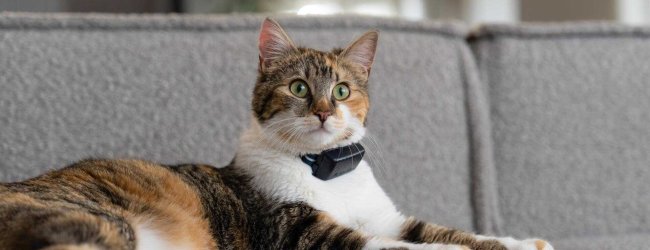How To Nail Puppy Potty Training Like A Pro
Training your little buddy to sit, shake, and give you high-fives is fun enough...but what about toilet breaks? Here's your ultimate guide to puppy potty training - and how to prevent a runaway attempt.

Welcoming a new little buddy to your home? Great! Having to constantly clean up their messes? Not so great. Like it or not, puppy potty training is one of the most important steps to helping your little buddy adjust nicely to living in a home. So here’s a comprehensive guide walking you through everything you need to know – including how to keep them safe in case they run off on a toilet break outdoors.

Always know your buddy is healthy & safe
Read moreWhy it’s so important to potty train your puppy
Besides keeping your surroundings clean, puppy potty training is also key to:
- Your puppy’s health, especially if you’re able to prevent accidents inside the house. This reduces the risk of infections and health issues for both you, your little buddy, and your family members.
- Teaching your puppy good behaviors, especially their boundaries. With a potty training schedule, you’ll establish a routine that’ll help your little buddy learn good habits and reinforce their understanding of where it’s okay to go (and where it isn’t.)
- Learning your puppy’s behaviors, especially signs they need to go. These might include sniffing thr ground, circling, whining, or suddenly pausing an activity midway.
A simple puppy potty training schedule you could follow
As a general rule of thumb: take your puppy to their designated “toilet” spot after meals and in regular intervals throughout the day. Like, for example:
- Morning: Take your puppy to relieve themselves immediately after they wake up – and 10-15 minutes after eating their first meal of the day. (Ideally, your puppy’s sleeping area or crate is near your bedroom, so you can prioritize their toilet break first thing in the morning.)
- Mid-morning: Take your puppy on another bathroom break to prevent accidents.
- Noon: Lunch, followed by a bathroom break.
- Afternoon: Another bathroom break after your puppy’s done napping.
- Evening: Dinner, followed by a bathroom break – and another one right before bedtime. Try and avoid too much water right before sleep.
What if you aren’t around to supervise?
In general, puppies can’t “hold it” for longer than a few hours, especially the younger they are. So a rule of thumb is their age in months + 1. Meaning, a 2-month old puppy can only hold it in for around 3 hours, give or take. So if you aren’t home that day, make sure to:
- Keep your puppy indoors in a safely-confined space, with plenty of toys and treats to keep them occupied. Baby gates work great when they’re still too small enough to jump over them.
- Crate training your puppy can be another option, but do be careful not to confine your puppy to them for longer than a few hours. (The younger they are, the lesser the time they should spend in one.)
- Get someone to check in on your puppy periodically to take care of any toilet breaks. Including one of your friends, a family member, neighbor, or a pet-sitter.
- Consider installing an in-home camera to check in on your puppy throughout the day. This can also help your little buddy feel reassured you’ll come back home to take care of them, especially if they have separation anxiety.
- Once you’re back home, accompany your puppy immediately for a toilet break.
- Clean up any indoor mess (especially accidents) without scolding your puppy. They just need a bit more practice, is all!
Besides, if you keep track of your puppy’s food and water intake, so you can gradually learn to predict when they’ll need to go outside. (Like if they’ve just eaten wet food over dry food.) Make sure to avoid switching up their meals (and treats) too often, since this may upset their tummies.
Our top puppy potty training tips to nail the process
With some patience, love, and consistency, you can end up toilet training your puppy in a matter of a week or two. But in general, vets recommend following a consistent schedule until your little buddy is around 6-8 months old.1
“For eight-week-old puppies, I recommend at least once every one to two hours during the day, unless they are napping.”
– Cathy Madson, MA, FDM, CBCC-KA, CPDT-KA2
So here are some tips to help you succeed and nail your puppy potty training like a pro:
1. Pick a specific potty spot
With a designated “toilet” spot, your puppy will gradually learn to relieve themselves quicker and easier by associating it with bathroom break time. So you should ideally train your little buddy to do their business:
- Somewhere indoors, so you plan ahead for days where the weather’s rubbish outdoors. This could be a designated potty “pad”, a disposable “grass” patch – or even a litter box. (Like cats use.) Make sure this area isn’t anywhere near where your puppy eats or sleeps or near any carpeted areas.
- Somewhere outdoors, which could be a corner of your yard or a spot on your sidewalk where it’s easy for you to clean up after them. Do your best to avoid toilet breaks in areas you see frequented by other dogs, since it can open up your little buddy’s risk for infections.
⚠️ Always keep your puppy leashed when out on toilet breaks. The chances of them running off from getting spooked, excited, or just curious about something – and ending up too far from safety – are always a given, especially the younger and less well-trained they are.
Read more: Why Do Dogs Run Away? 6 Reasons Behind It
2. Be consistent with your commands (and rewards)
Once you’ve taken them to their bathroom break spot (and if they’re quite young), your puppy might relieve themselves immediately. You can help them learn a command like “Okay, go potty,” or “Do your business,” – so they learn to associate it with a toilet break. With this command – and the sights, sounds, and smells of the toilet spot area – your puppy will naturally learn to relieve themselves on cue.
We’d also recommend keeping some treats ready so you can reward your puppy after they go potty – whether that’s outside or inside. This helps them understand that it’s “good behavior” to relieve themselves only in specific spots.
Did your puppy have an accident indoors? Stay calm, thoroughly clean up the mess (to prevent any odors that might attract them back to the same spot) – and don’t offer a “reward”, i.e. treats or praise.
3. Avoid scolding your puppy
The younger your little buddy is, the more likely it is they might not make it out the door before they’ve had an accident. So in these cases, do your best to stay patient and avoid getting mad at them. Besides stressing them out, you’ll just end up making your little buddy scared and anxious – which can make potty training slower and more difficult. Yelling, scolding, or punishing them might just make your puppy afraid to relieve themselves when you’re around.
4. Keep an eye out for your puppy’s “toilet break” signals
No matter how consistent you’ve been, there might just end up being a time your puppy needs to go outside of their designated times. So watch for signs like:
- Restlessness or pacing up and down
- Pawing or scratching the door
- Vocalizing, including barking and/or whining
- Circling
- Sniffing around
- Fidgeting
- Squatting (Red flag! Get your puppy outdoors before they have an accident.)
💡Depending on how many dogs you have at home, you might find one breed of puppy taking much longer than others! For example, smaller dog breeds tend to have smaller bladders overall, so they might need more frequent toilet breaks.3
However, if you notice your puppy needing to pee more than usual and taking them on toilet breaks consistently – it might be worth getting in touch with your vet to rule out any underlying medical issues.
5. Plan ahead for distractions & escape attempts
Even the quietest, most isolated toilet break spot isn’t free from distractions. So no matter how firmly leashed you’ve got them, all it takes is a moment’s negligence for your puppy to bolt off miles away from safety – especially if you’re both outdoors. So you could plan ahead for a “lost puppy” situation by:
- Informing your neighbors, making both you and your puppy familiar faces. So they can keep an eye out for your little buddy and alert you if they spot them running down the driveway or exploring their backyards.
- Attaching an ID tag to your puppy’s collar, which can help a kind stranger to identify your lost little buddy. Make sure to include your contact details on their ID tag as well.
- Getting your puppy microchipped at 8 weeks, which is considered a safe, painless, relatively affordable process. Microchips work like a permanent ID tag for your puppy and contain your contact details. A vet or a shelter can scan your puppy for one to get in touch with you.
⚠️ Just remember: an ID tag can fall off or get smudged. Likewise, a microchip can only help someone identify your puppy. Not actively track them down or actually locate them for you.

Keep track of your dog’s daily adventures
Follow every step with unlimited range Live Tracking. Get alerts if they wander too far. Keep them happy & healthy with Activity & Sleep Monitoring. Get Health Alerts if something seems off.
4 fun puppy potty training techniques you could try
Train your puppy to ring a bell as a signal
With bell training, your puppy learns to ring a bell to signal they need a toilet break. This helps your puppy signal their needs to you clearly and consistently. Here’s how you can go about it:
- Introduce your puppy to the bell by hanging it by the door you use to take them outside. Let your puppy interact with it, batting it with their nose and paws – and praise them plenty when they do.
- Ring the bell just before you two head outdoors for a toilet break. With time, your puppy will learn to associate the sound with heading outdoors to relieve themselves.
- Gradually, allow your puppy to ring the bell just before you two head outdoors for a toilet break. So they learn how to do it themselves.
- Keep your puppy away from the bell outside of toilet break times, so they don’t ring it constantly for entertainment.
- Always respond promptly when your puppy rings the bell and take them outdoors for a toilet break immediately. This will help them realize that the sound of the bell = toilet break and not playtime or walks instead.
Give paper training a whirl
If you two are living in an apartment, sick, or the weather’s awful outdoors – give paper training a try. With this indoor puppy potty training method, your little buddy learns to relieve themselves in a designated area covered with newspapers or pee pads. So start by:
- Picking a specific indoor toilet break spot where you want your puppy to eliminate. Make sure it’s at least a bit isolated, away from feeding, sleeping, and carpeted areas.
- Cover this area with newspapers, pee pads, or even disposable “grass” patches.
- Encourage your puppy to head to this area for toilet breaks. Give them a treat if they go neatly and on top of the covered spots. If they’re still small, you can pick them up and place them on the papers when they show signs of needing to go. Reward them plenty once they do, so they learn that “going potty here = good!”
- As your puppy gets used to their designated indoor toilet break spot, you could gradually reduce the size of the covered area.
Get your puppy used to a litter box
Much like cats (and as with paper training), you can also train your puppy to use a litter box to relieve themselves in case outdoor access isn’t an option.Introduce the litter box gradually by placing your little buddy in it when they’re signalling it’s time to go. Reward your puppy plenty when they do go neatly inside the litter box. Use a shallow litter box with a puppy-safe layer beneath, like newspaper or a specially-designed dog litter.
Teach your puppy to pee in (safe) public spaces
As your little buddy grows older, they’ll need plenty of play and outdoor time to burn off all that extra energy. Meaning more walks and puppy play dates at the dog park – which also means their potty training should extend outside your yard as well. So always go prepared for walks with:
- Poop bags
- A pair of disposable gloves to keep your hands clean
- Their leash/harness
- Their collar and ID tag
- A flashlight, if you’re on a walk in the evening or nighttime
- Their smart dog tracker – so you can track their location, walks, and activity
When you notice your puppy signalling to go, make sure to take them to a secluded spot a little away from other people and pets. Reassure them with some pats to help them feel relaxed. Spread out some newspaper or a pee pad, if necessary. (These can make it easier for you to clean up after them.) At this point, your puppy should hopefully be used to to hearing you say, “Go on, go potty,” or “Do your business.” Also, always clean up after your puppy – and reward them plenty once they’re done.
With time and patience, you’ll get your puppy used to safely relieving themselves without making a mess – no matter where you two are.



